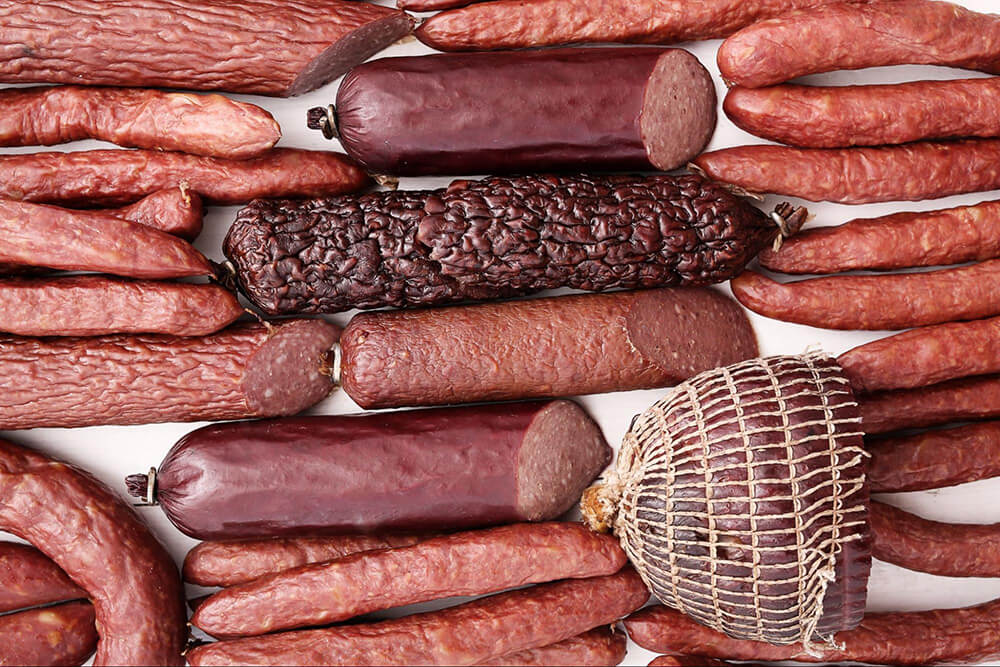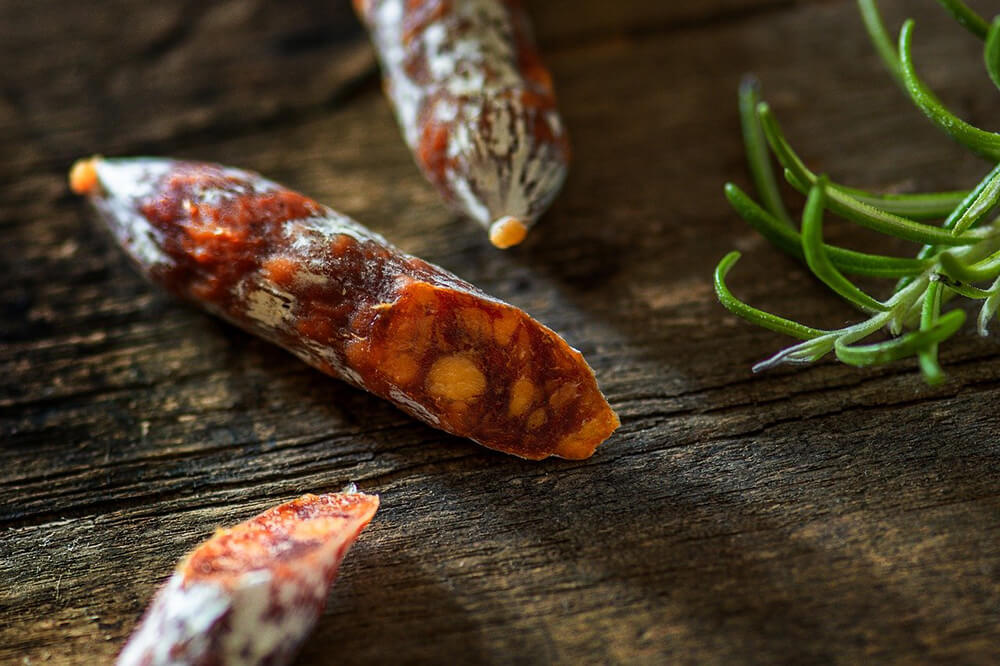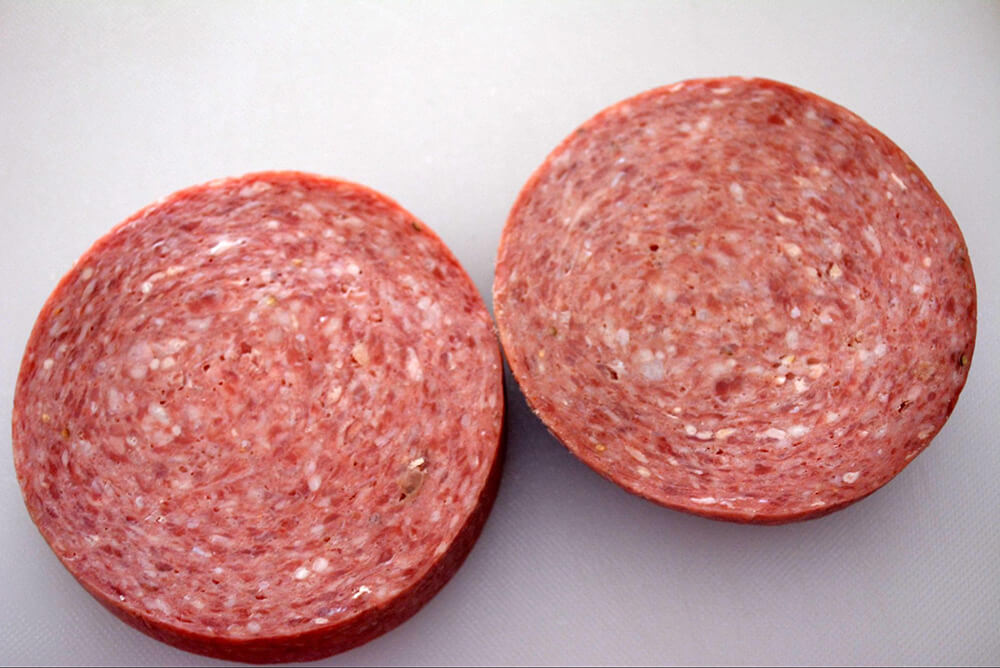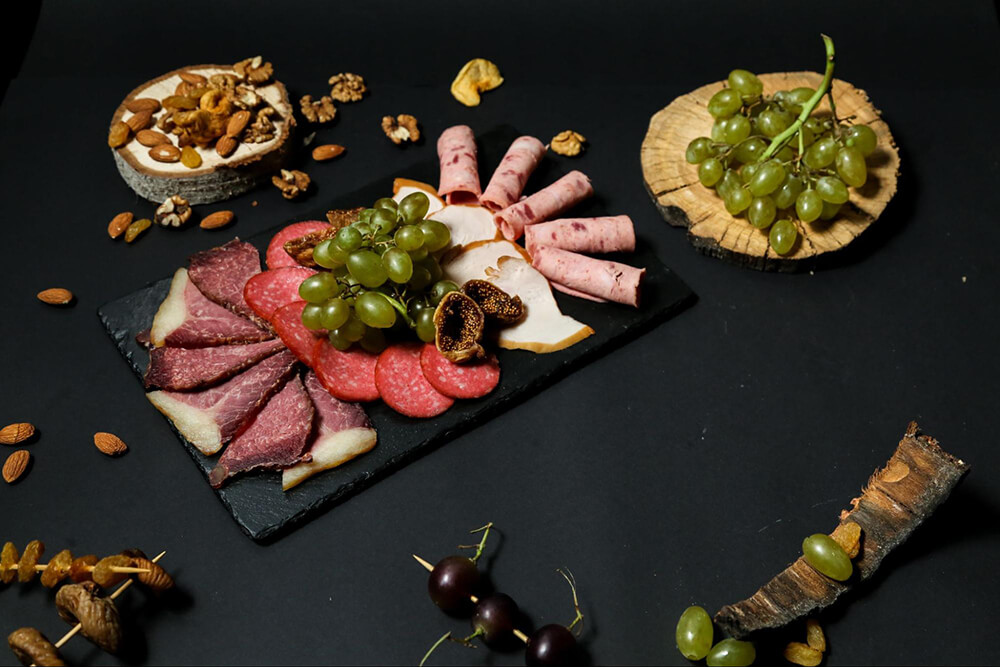

EASTER ORDERS ARE CLOSED!
Wishing everyone a Happy Easter



Various types of salami
When it comes to culinary delights, few foods are as universally beloved and versatile as salami. This seasoned, cured sausage is a hallmark of Italian cuisine, featuring prominently in everything from sandwiches to pasta dishes and charcuterie boards. But what about the varieties of salami that exist? How do we differentiate an Italian salami from a Genoa salami? What nuances of flavour and texture set the Milano salami apart from the Finocchiona?
From the art of curing meat to the range of salami types, join us on this gastronomic journey as we delve deeper into the world of this much-loved delicacy.

Meat curing starts with finely ground meat
‘Salami’ originates from the Italian word ‘salame’, which encompasses various salted meats. The essence of salami-making lies in curing meat, specifically pork meat. This process involves blending finely ground pork with a medley of spices and wine and allowing it to age. The result? A spectrum of cured meats, each with its unique taste profile and texture.
Pork fat is a crucial ingredient in salami production, contributing to the marbling effect seen in a salami slice. Lean meat, such as pork shoulder and ground pork, also forms the base, with various parts like seasoned pork neck bits enhancing the flavour profile.
While all salamis belong to the broader cured meats family, there’s an incredible diversity within the salami world. Each type of salami varies in flavour, texture, and ingredients, making every bite a new experience. Let’s take a closer look at some of these variants.

Classic Genoa Salami
Named after the Italian city of Genoa, this salami type is a delicious pork and beef mix, spiced with red wine and garlic. Housed in a salami casing, Genoa salami boasts a slightly sweet, full-bodied flavour, with the finely ground pork providing a soft texture that has won over many taste buds.

Firm salami
Hard salami is characterised by its extended dry curing process that leads to a firm, slightly chewy texture. The process uses a blend of finely ground meat, pork fat, and a swathe of spices. Robust and durable, hard salami is an excellent addition to your antipasto platter.

In Italian, ‘cotto’ means ‘cooked’, which is the defining characteristic of cotto salami. Unlike most dry-cured salamis, cotto salami undergoes cooking or light smoking before it’s ready for consumption. Its primary ingredients are pork shoulder, ground pork, and beef, offering a mildly spicy flavour. Typically, it’s enjoyed cooked and thinly sliced, be it on sandwiches or in pasta dishes.

Felino salami, named after the Italian town of Felino, stands out for its soft texture and rich, wine-soaked salami taste. It uses finely ground lean meat, typically pork, paired with pork fat and seasoned with salt, black pepper, and often red wine. This enhances its overall flavour profile, while its lightly smoked aroma make it a must-have addition to your charcuterie board.
Finocchiona salami, hailing from the Tuscan region of Italy, is famed for its unique fennel infusion. The name ‘finocchiona’ stems from the Italian word ‘finocchio’, meaning ‘fennel’; this ingredient lends this salami a unique, aromatic flavour. This salami variant uses a mixture of finely ground pork, pork fat, and black pepper. Adding fennel seeds sets it apart from other salami types, making it a much sought-after option on any charcuterie board.
Milano salami is a staple in Italian American butcher shops. This finely ground salami is made from pork meat and fat, generously seasoned with black pepper. The Milano salami showcases a unique, slightly chewy texture with a salty pork base and a mild, savoury flavour profile.

The world of cured meats doesn’t stop at salami. Here are just some of the other cured meats with diverse flavours and textures, perfect for an antipasto platter.
Prosciutto cotto, or ‘cooked ham’ in Italian, is a famous Italian bacon made from pork shoulder. Unlike salami, it is not a dry-cured ham. Instead, it’s cooked and often enjoyed thinly sliced, offering a smooth, savoury flavour that makes it a favourite among culinary cured pork enthusiasts.
Though not a traditional Italian meat, Mexican chorizo has won the hearts of many with its rich, spicy flavour. This fresh salami is made from ground meat (often pork) and seasoned with various spices, including chilli peppers and smoked paprika. It is eaten cooked, often crumbled into dishes for a punch of flavour.
Cured pork belly is a type of Italian bacon known for its deliciously fatty texture and rich, salty flavour. It’s often thinly sliced, used in pasta dishes, or served on a charcuterie board.
This is an Italian specialty meat where salt cured pork is rolled, cooked or smoked. It offers a fatty, rich flavour and can be used in various dishes.

A decadent charcuterie board
Now that you’re acquainted with the different types of salami and other cured meats let’s explore ways to enhance your salami experience.
Italian meats and cheese make a divine pairing. Try matching your salami with cheeses like caciocavallo cheese for a delightful contrast in flavour.
Salami, especially thinly sliced, can be a great addition to pasta dishes. It offers a burst of savoury flavour that complements the pasta perfectly.
Nothing beats a well-curated charcuterie board featuring different types of salami, cured meats, cheeses, roasted peppers, and sundried tomatoes. It’s a feast for both the eyes and the palate!
Now that we have delved into the sumptuous world of salami let’s explore some recipes that bring out the distinct flavours of this versatile cured meat. Here are two easy yet delicious salami-centric dishes to try at home.

The slightly chewy texture and the spicy salami flavour make it a fantastic addition to pasta dishes. Here’s an easy-to-follow recipe for a fiery and flavorful spicy salami pasta.
Ingredients:
Instructions:

The beauty of a charcuterie board lies in its versatility and visual appeal. Here’s a simple guide to creating a charcuterie board featuring different types of salami.
Ingredients:
Instructions:
Remember, the joy of cooking lies in experimentation, so feel free to add your spin to these recipes and create your own salami masterpieces.

Board full of salami
Whether you’re a fan of spicy salami or you’re a traditional salami lover, there’s no denying the appeal of this versatile cured meat. With a vast array of options ranging from the wine-soaked Felino salami to the fennel-infused finocchionai, there’s a salami to please every palate.
These cured meats offer a bounty of flavours, from the distinctive flavour of wild boar salami and the spicy tang of peppered salami to the rich, salted appeal of cacciatore salami. Understanding the different types of salami not only enriches your culinary vocabulary but also opens up a whole new world of gastronomic possibilities.
Whether enhancing your antipasto platter, experimenting with pasta dishes, or even just a simple sandwich, there’s always room for salami. A beloved ingredient with its impressive versatility, salami is more than just food—it’s a testament to a rich Italian culinary tradition that stretches back centuries.